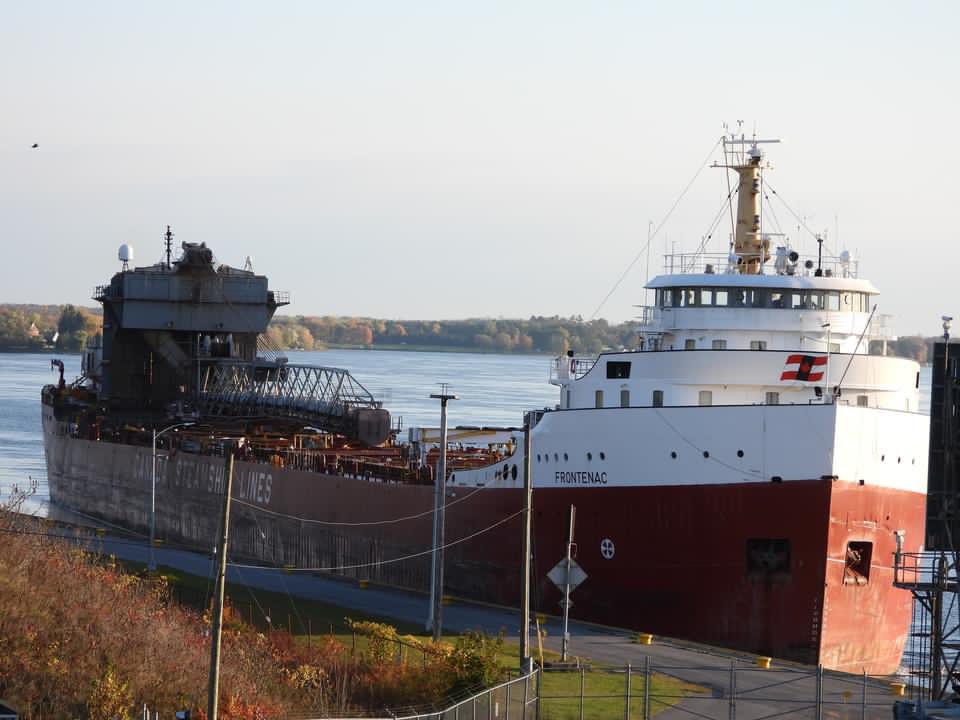By Michael Folsom,
Unifor, the union representing St. Lawrence Seaway Management Corporation (SLSMC) workers across Locals 4211, 4212 and 4323 in Ontario and Locals 4319 and 4320 in Quebec, has given notice of a strike just after midnight on Sunday, October 22. Members in the supervisory and engineering group of workers in Locals 4211 and 4319 rejected a tentative agreement on August 1, 2023 and have aligned their plans with the maintenance, operations and administrative unit.
The Canada-based union workers play a major role in the operations of 13 locks along the St. Lawrence Seaway, a vital throughfare from the Atlantic Ocean to the upper Great Lakes, have been on the job this shipping season despite an expired contract on March 31.
St. Lawrence Seaway Management Corporation – Notice of Strike Received
“Seaway workers manage the transit of more than 200 million tons of cargo each year and they deserve fair wages for the vital and challenging work they do,” said Lana Payne, Unifor National President. “The St. Lawrence Seaway Management Corporation, as a contractor of the federal government, must meet wage expectations and show these workers the value of their labor.”
Negotiations with the employer began on June 19 and 20, 2023 with additional dates from September 25 through 29. The parties decided to use a conciliator to facilitate discussions from the onset of bargaining. All parties returned to the negotiation table earlier this week and under agreement of 72-hour notice, the union informed SLSMC on Wednesday of the impending strike.
Talks are set to resume on Thursday in an attempt to reach a deal, or workers are prepared to walk picket lines effective 12:01 a.m. on October 22.
“Workers are expecting wage increases, especially given the current cost of living, and they have made it clear that the St. Lawrence Seaway Corporation hasn’t yet offered enough to settle this agreement,” said Daniel Cloutier, Quebec Regional Director. “The trade corridor doesn’t work without the workers – and they are demanding and deserving of respect.”
“This employer has shown no willingness to address the workers’ concerns in the workplace or approach them with a respectful wage offer,” said Daniel Cloutier, Unifor Quebec Director. “A strike is always a tool of last resort when it comes to negotiations, but these workers have been clear and are united in their goals – they’re ready.”
Despite the strong push from the union, SLSMC remains confident that a satisfactory resolution can be reached and remains committed to obtaining a fair settlement.
Ahead of the recent negotiations, SLSMC began to put a contingency plan in place with the threat of a possibility of shutting down the 2023 Seaway season more than 2 months early.
On October 11, SLSMC began warning upbound ships entering the Montreal-Lake Ontario section of the Seaway that if they opt to continue a transit after 00:01 a.m. on October 12, SLSMC wouldn’t be able to commit to successfully transit the ship downbound, and subsequently out of the system, after October 20.
Cargo movement through the Seaway plays an important part of the North American economy and supply chain. A strike would have a strong impact on grain movements during a period when the world is in dire need of this essential commodity, especially with effects of the war in Ukraine.
The United States operates 2 locks on the Seaway in Massena, NY, which would be forced to shutdown since no ship traffic would be able to reach that point on the waterway. The Great Lakes St. Lawrence Seaway Development Corporation, part of the US Department of Transportation, has not commented on the issue.
The binational St. Lawrence Seaway’s 15 locks (13 Canadian and 2 American) serve as the linchpin within the broader waterway, connecting the lower St. Lawrence River to the Great Lakes, enabling ships to transit between Montreal and Lake Erie, a difference in elevation of more than 550 feet (168 meters). Over 200 million tons of cargo travel on the waterway on an annual basis.
Michael Folsom is creator of the Seaway Ship Watchers Network and Downbound Discussions Podcast.

 Join The Club
Join The Club











